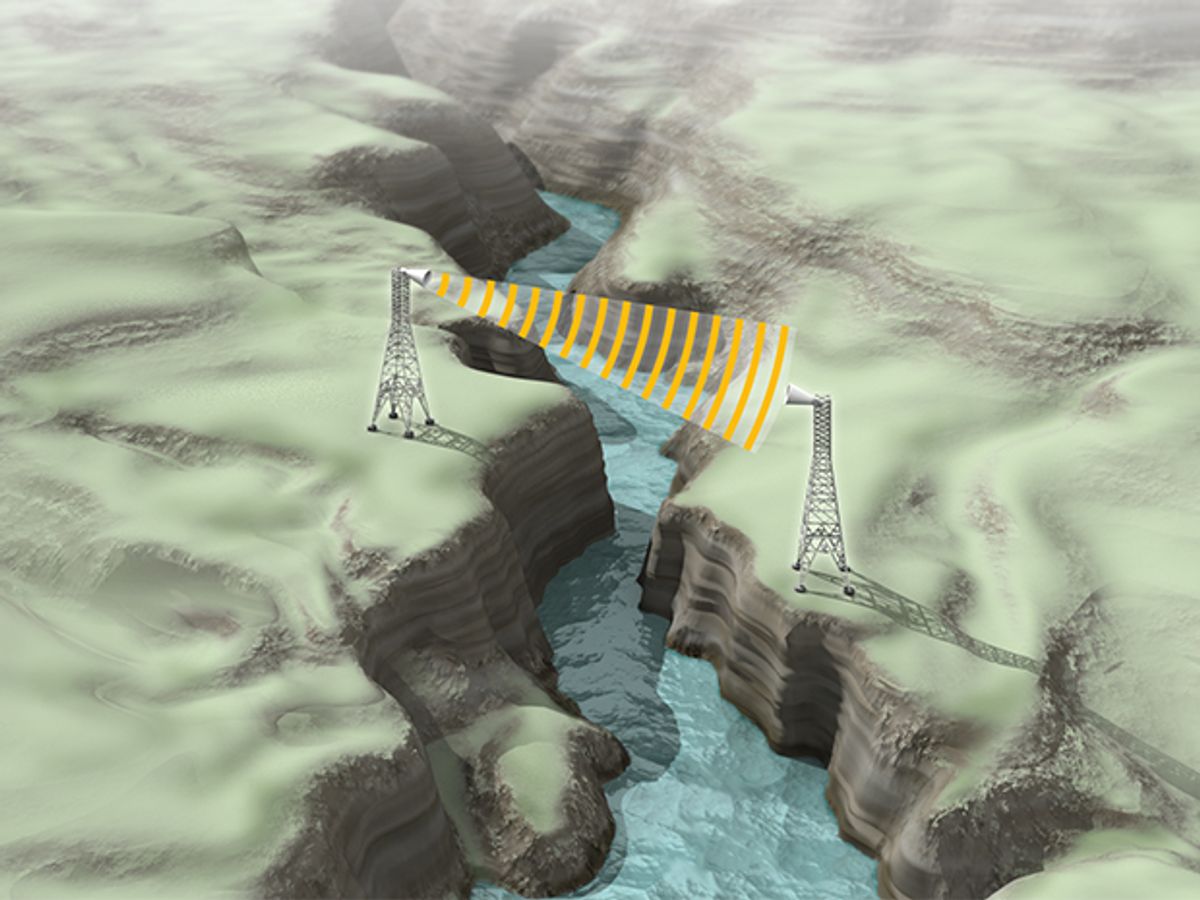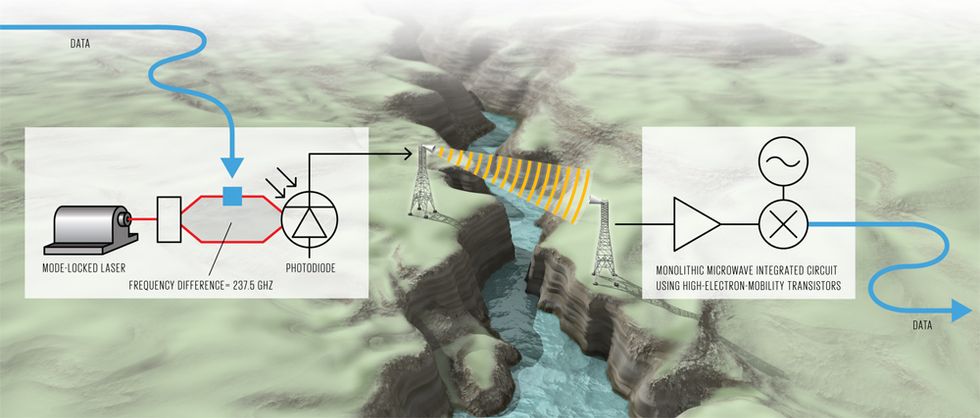The problem with the radio spectrum between 3 and 3000 megahertz is that it’s crowded. Television, radio, mobile phones, Bluetooth, GPS, two-way communication devices, and Wi-Fi all operate in this high- to ultrahigh-frequency range. So with nowhere to go but up, researchers have been working for decades to utilize the 3- to 3000-gigahertz span. In October, a team reported a hopeful sign—a record 100-gigabit-per-second wireless data transmission.
Scientists in Germany, at the Karlsruhe Institute of Technology (KIT), the Fraunhofer Institute for Applied Solid State Physics, and the University of Stuttgart, created a wireless connection between a transmitter and a receiver that were 20 meters apart at a frequency of 237.5 GHz. This frequency is in the millimeter-wave portion of the spectrum and tantalizingly close to the terahertz region (usually defined as starting at 300 GHz). The terahertz region has a lot of potential because its radiation is nonionizing and yet can penetrate clothing, making possible things like advanced bomb detection and body screening.
Terahertz and subterahertz frequencies have also been investigated for decades as a high-speed data-transfer solution, especially for rural or remote locations where extending the fiber-optic network would be difficult and costly. In the study, published in October in Nature Photonics, the data transfer is 100 times as fast as the 1-Gb/s speeds promised by Google Fiber and other gigabit initiatives being tested in certain cities.
“For us, the most exciting thing was to do wireless communication at this carrier frequency, at this high data rate, where nobody else could do it before,” says Swen König, a photonics research engineer at KIT. “It’s only the beginning of telecommunications at this frequency.”
To achieve such high data rates the researchers put together an experimental system that combined cutting-edge electronics and photonics. They elected to add photonic elements to the transmitter setup instead of just using electronics, because the photonics enabled a larger bandwidth and a larger dynamic range. The downside, however, was that the photonic scheme lowered the transmitter’s output power.
The team used a device called a photon mixer (borrowed from the Japanese company NTT-NEL), which combines and directs two lasers of different frequencies onto a photodiode. One laser is modulated to carry data; the other is not. Shining the lasers on the photodiode produces an electrical signal with a frequency that equals that of the difference between the lasers—237.5 GHz. That signal is then radiated by a horn-shaped antenna.
On the receiver end, the team used a custom-built integrated circuit made up of high-electron-mobility transistors, compound semiconductor devices that can operate at millimeter-wave frequencies. At just a few square millimeters, the chip is a big step toward the ability to incorporate terahertz receiving technology in smartphones and tablets. The IC amplified the incoming radiation and mixed it with another frequency to extract the transmitted data.
John Federici, a professor of physics at New Jersey Institute of Technology who studies terahertz technology, is impressed by the research. He says the 20-meter transmission distance is somewhat limiting, but he notes that it would be adequate for many schemes that technologists have dreamed up for terahertz data transfers. “Some people talk about a data kiosk that’s streaming high data rates to mobile users,” he says. “They walk up to the data kiosk, they download their videos or whatever at very high data rates, and they move away.” Federici cautions against generalizing the idea too much, though, saying that terahertz and near-terahertz frequencies propagate unreliably in the atmosphere or through walls in homes.
One feature of subterahertz transmission that the German group find especially promising is that this type of radiation is less affected by local conditions like fog or rain when compared with free-space optical transmission, which uses lasers to carry data through the air. But Carter Armstrong, a vice president and terahertz expert at L-3 Communications, points out that the researchers did not actually test their design in these types of obstructed conditions. “They say that free-space terahertz transmission—in their case upper-millimeter-wave—is less affected by rain and fog,” so they should “demonstrate it by operating the system,” he says.
KIT’s König agrees that applications in which a user has a clear line of sight between the transmitter and receiver are the most promising right now. But he also says the research team is confident that they can scale up the technology to transmit over a distance of several hundred meters. They already broke a long-range record in May for transmitting 40 gigabits per second over more than a kilometer at 240 GHz using a purely electronic system. The output power of the photodiode was the limiting factor in this recent experiment, but new research is under way aimed at adding an amplifier after the photodiode to boost the signal.
More broadly, development for many components of the experimental setup is continuing at the different institutions. “This was an interplay between so many different partners and technologies,” König says. “The satisfaction was that all these concepts worked.”
A correction to this article was made on 02 December 2013.

